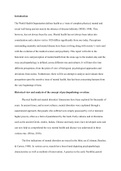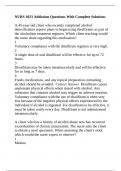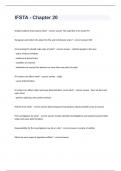Essay
Applied Psychology Year 13 Psychopathology Assignment
- Module
- Psychopathology
- Institution
- PEARSON (PEARSON)
These are my assignments for year 13 BTEC Applied Psychology. I got a Distinction with these. They explore the causes of mental disorders and their types and characteristics, the history of the perception of mental disorders, definitions of psychopathology. I mostly focus on Anxiety Disorders. They...
[Show more]







